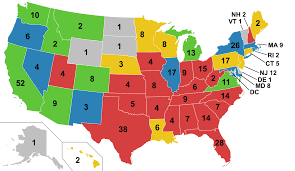What is gerrymandering? Rigged Maps, Stolen Voices!
Gerrymandering is the practice of manipulating electoral district boundaries to benefit one political party, group, or socioeconomic class at the expense of another.
DIGICULT
8/5/2025


What is gerrymandering? Rigged Maps, Stolen Voices!
Gerrymandering is the practice of manipulating electoral district boundaries to benefit one political party, group, or socioeconomic class at the expense of another. The term originated in 1812 from Massachusetts Governor Elbridge Gerry, who signed a redistricting bill that created an oddly shaped district resembling a salamander, which was satirically nicknamed the "Gerry-mander".
Methods
Cracking: Spreading voters who favor the opposition across several districts to dilute their voting strength and prevent them from forming a majority in any single district.
Packing: Concentrating voters who favor the opposition into a few districts, effectively wasting their votes and making other districts easier for the gerrymandering party to win.
Hijacking: Merging two districts, forcing two incumbents of the opposing party to compete for the same seat, ensuring one loses.
Kidnapping: Moving an incumbent's home address into another district, hindering their chances of re-election in their original district or forcing them to run in a new district with a different voter base.
Effects
Undermines democracy: Gerrymandering allows politicians to choose their voters rather than the other way around, skewing election results and making elections less competitive.
Disenfranchises voters: The practice can effectively dilute the voting power of members of ethnic or linguistic minority groups (racial gerrymandering), according to Britannica.
Leads to increased partisanship: Safe districts with predictable outcomes can encourage more extreme candidates and reduce incentives for politicians to compromise or appeal to a broader electorate.
Can hurt communities of color: Residential segregation makes communities of color easier targets for cracking and packing strategies, further diluting their political influence.
Addressing gerrymandering
Independent Redistricting Commissions: Creating nonpartisan or bipartisan commissions to draw electoral maps, rather than allowing legislatures to do so.
Transparency Regulations: Increased transparency in the redistricting process can discourage gerrymandering by forcing lawmakers to defend their proposed maps in a public forum.
Objective Rules for Districting: Setting clear criteria for drawing districts, such as requirements for compactness and equal population, according to Britannica.
Federal Legislation: Legislation like the Freedom to Vote Act in the United States aims to ban partisan gerrymandering, enhance transparency, and strengthen protections for communities of color in redistricting.
Ideagiri: Online platform for Education: Govt Colleges and Universities, Govt Jobs, Exams, Internships, Business, Finance, Technology, DigiCult and more - Ideagiri.com
Nocont@ideagiri.com
© 2025. All rights reserved.
